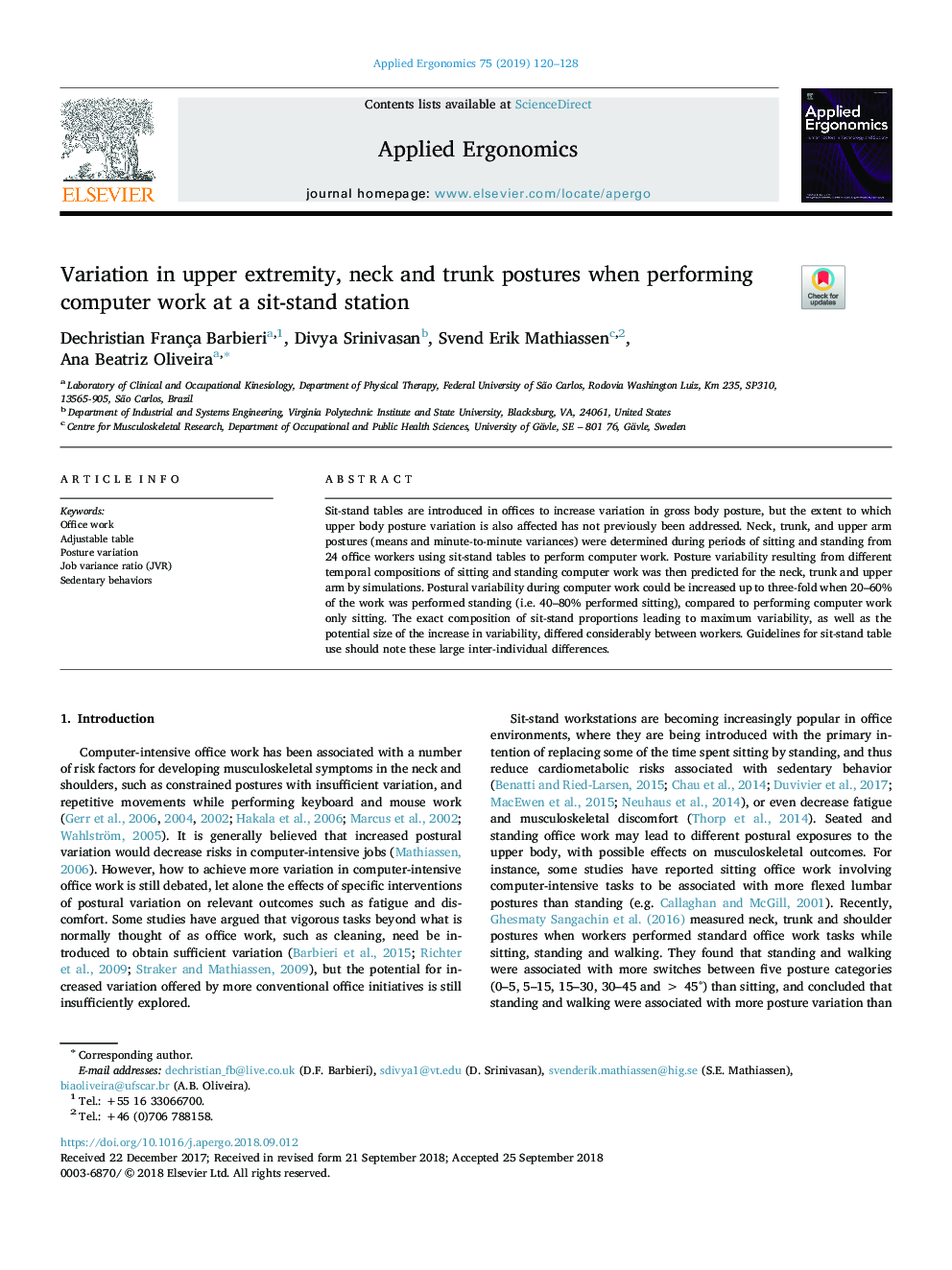| Article ID | Journal | Published Year | Pages | File Type |
|---|---|---|---|---|
| 11028035 | Applied Ergonomics | 2019 | 9 Pages |
Abstract
Sit-stand tables are introduced in offices to increase variation in gross body posture, but the extent to which upper body posture variation is also affected has not previously been addressed. Neck, trunk, and upper arm postures (means and minute-to-minute variances) were determined during periods of sitting and standing from 24 office workers using sit-stand tables to perform computer work. Posture variability resulting from different temporal compositions of sitting and standing computer work was then predicted for the neck, trunk and upper arm by simulations. Postural variability during computer work could be increased up to three-fold when 20-60% of the work was performed standing (i.e. 40-80% performed sitting), compared to performing computer work only sitting. The exact composition of sit-stand proportions leading to maximum variability, as well as the potential size of the increase in variability, differed considerably between workers. Guidelines for sit-stand table use should note these large inter-individual differences.
Keywords
Related Topics
Physical Sciences and Engineering
Computer Science
Human-Computer Interaction
Authors
Dechristian França Barbieri, Divya Srinivasan, Svend Erik Mathiassen, Ana Beatriz Oliveira,
